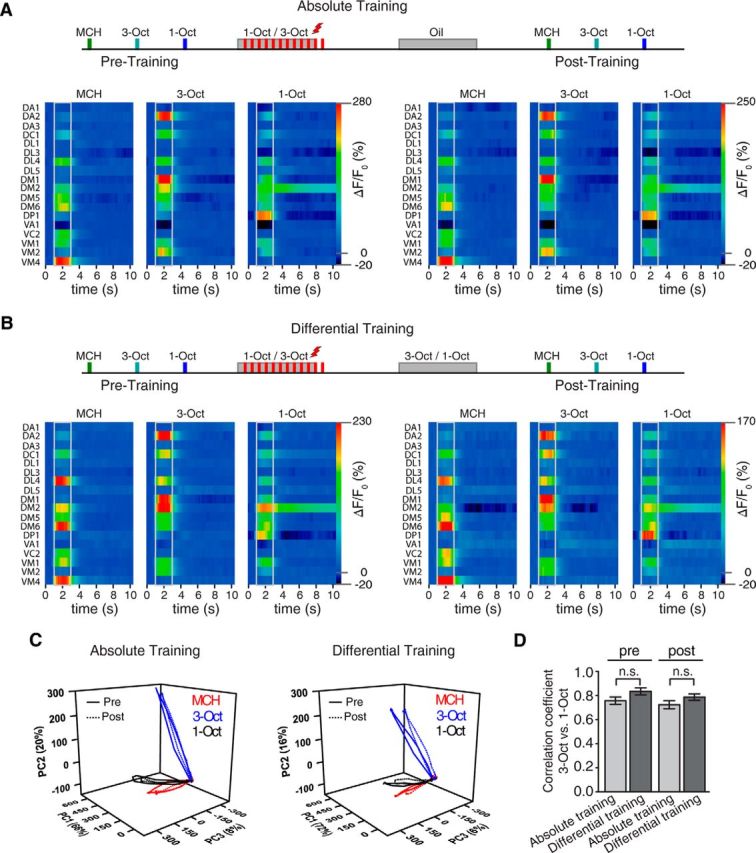Figure 10.

The spatiotemporal Ca2+ activity in olfactory projection neurons at the level of the antennal lobe evoked by two similar odors is not affected by differential or absolute conditioning. A, Schematic illustration of the absolute conditioning regimen applied to the prepared fly positioned under the microscope. Bottom, Odor-evoked changes Ca2+ activity over time are shown as false colors in 18 identified glomeruli in response to the odorants MCH, 3-Oct, and 1-Oct before and after training, respectively. Left, Pretraining glomerular activation. Right, Post-training. Gray lines indicate odor onset and offset. Values indicate mean; n = 10 animals. B, Schematic illustration of the differential conditioning regimen applied to the prepared fly positioned under the microscope. Bottom, Odor-evoked changes Ca2+ activity over time are shown as false colors in 18 identified glomeruli in response to the odorants MCH, 3-Oct, and 1-Oct before and after training, respectively. Left, Pretraining glomerular activation. Right, Post-training. Gray lines indicate odor onset and offset. Values indicate mean; n = 10 animals. C, PCA of the time courses of the mean odor-evoked responses in olfactory projection neurons before training (solid lines) and after training (dotted lines) for absolute conditioning (left) and for differential conditioning (right). The first three principal components covered >94% of the variance. D, Pearson's correlation coefficients between the similar odors 1-Oct and 3-Oct before and after absolute or differential conditioning. No significant differences (n.s., Not significant; p > 0.05; Mann–Whitney U test, n = 10 each) between absolute and differential training were observed. Bars indicate mean ± SEM.
